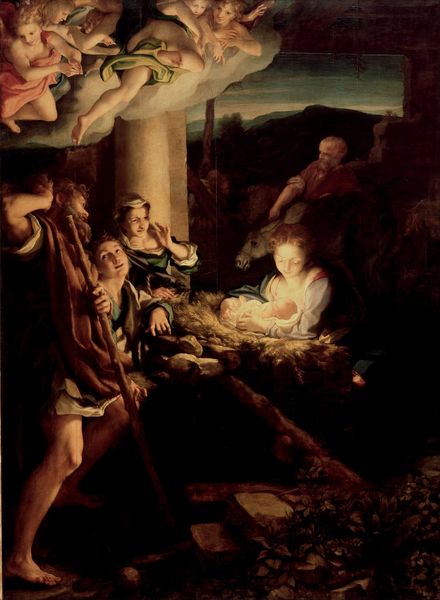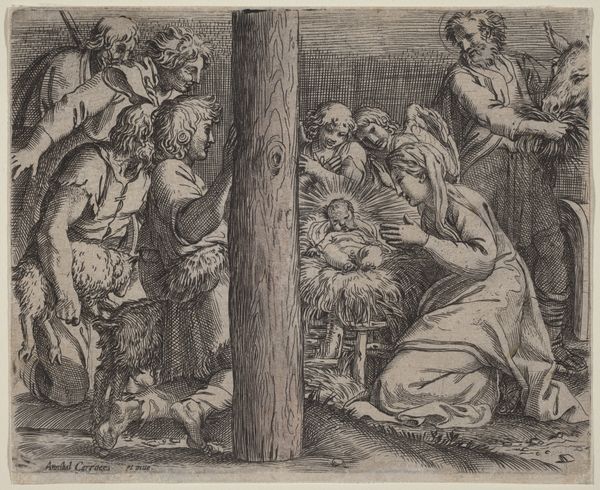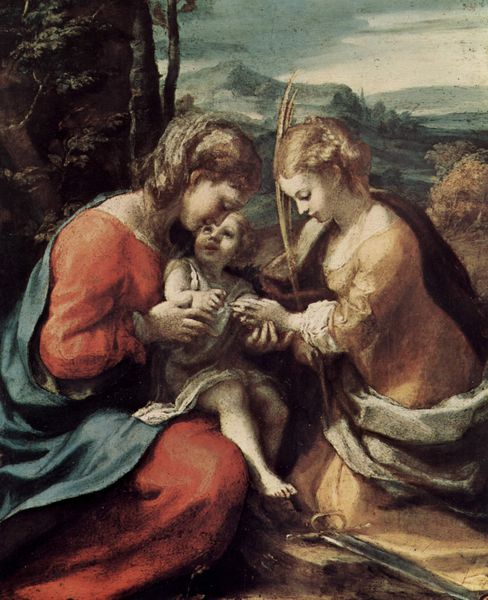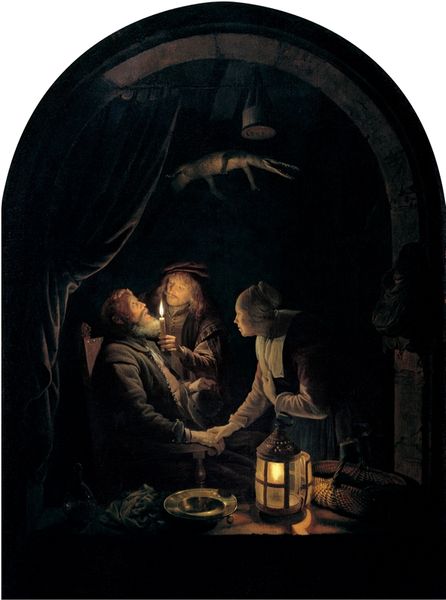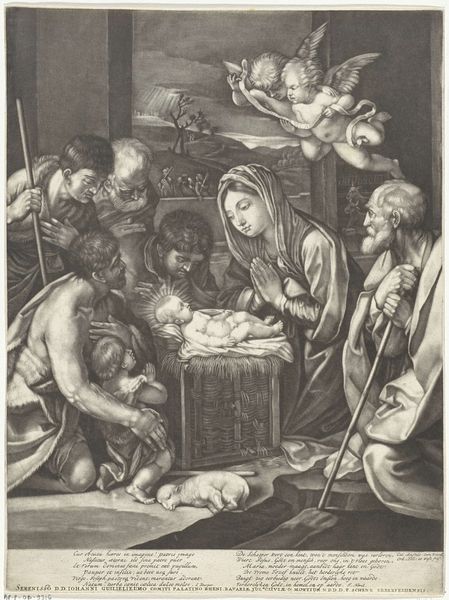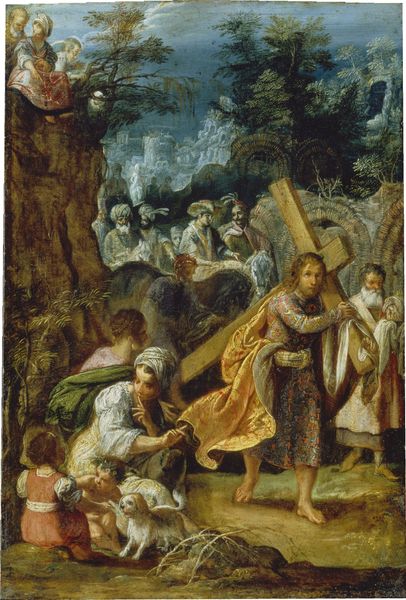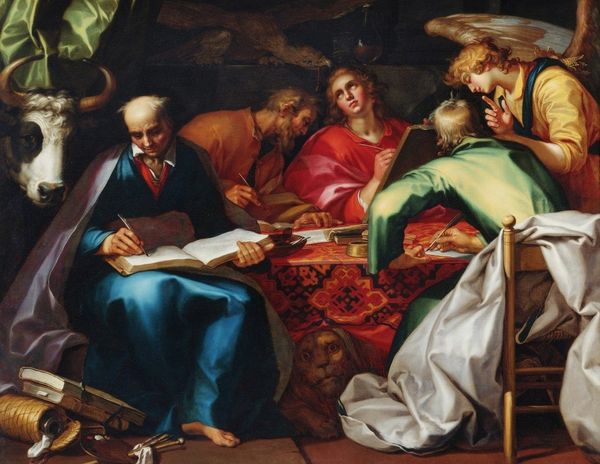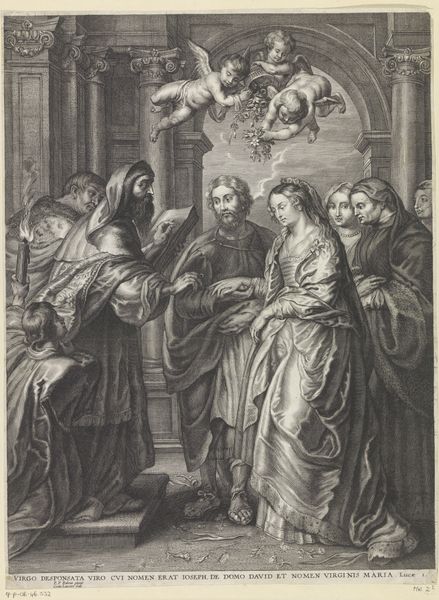
panel, oil-paint
#
panel
#
baroque
#
oil-paint
#
landscape
#
figuration
#
oil painting
#
neo expressionist
#
chiaroscuro
#
history-painting
Copyright: Public domain
Editor: This is “The Three Marys at the Tomb of Christ” painted by Adam Elsheimer in 1603. It’s oil on panel, and I’m immediately struck by how dark it is, yet there's this intense burst of light around the angel. It’s such a dramatic scene. What do you see in this piece, especially with that contrast? Art Historian: That dramatic contrast is central, isn’t it? The chiaroscuro certainly lends itself to the emotional weight of the subject. Notice how the light emanates from the angel, not just illuminating but almost sanctifying the moment. In Christian iconography, light is intrinsically linked to divinity and knowledge. The three Marys, cloaked in shadow, are figures of grief and human limitation. Elsheimer uses light to represent divine revelation breaking through the darkness of their despair. Editor: So the light is more than just… well, light? It has symbolic meaning connected to the angel's message? Art Historian: Precisely. Think about what this scene represents. It is not merely an observation, but an unveiling of the divine plan. The figures of the Marys also contribute to the symbolic structure. Are there other images you can connect this emotional depiction of female discipleship too? Editor: Well, paintings of the crucifixion, of course. And even scenes with Mary Magdalene, like her anointing Jesus' feet... they have similar emotional depth. Art Historian: Exactly! It reveals how core stories and certain emotions permeate our cultural imagination. How they visually manifest shapes how we internalize stories and build cultural memories. And beyond Christian iconography, consider what else this imagery echoes in human experience. Think about that contrast again. How often is a great surprise delivered in times of gloom? Editor: So, the image uses familiar visual cues, light and shadow for example, to tap into our deeper cultural understanding and emotional experience? It's like the painting triggers associations already within us. Art Historian: Indeed. It’s not just about depicting a scene but actively participating in a visual tradition that informs our understanding of faith, loss, and hope. Ultimately, this piece invites us to reflect on the weight and resilience of cultural memory, particularly during our darkest hours. Editor: I’ve definitely learned so much more, considering not just the visual but the deep symbolism, it really brings the painting to life in a new light, quite literally. Thanks.
Comments
No comments
Be the first to comment and join the conversation on the ultimate creative platform.
